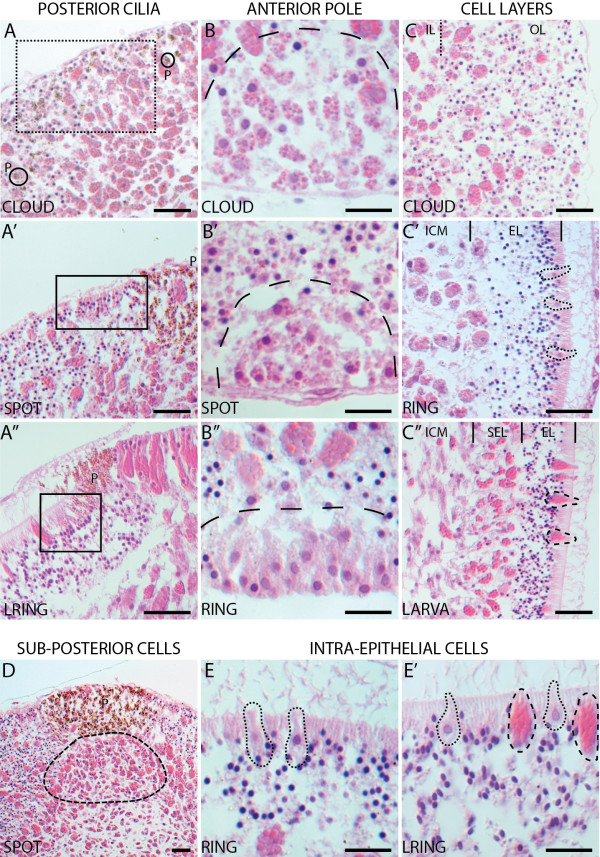Figure 8 .
Cytological features of Amphimedon queenslandica development. All panels show sectioned embryos stained with hematoxylin and eosin. (A-A”) Posterior ciliated cells. Cloud, no cell population uniquely lies in the future position of the posterior ciliated cells, dotted box (A). Spot, cells lateral to the pigment spot are morphologically distinct, box (A’). Late ring, these cells have apparently ingressed, and appear to be clustered, box (A”). (B-B”) Anterior pole. Cloud, distinct cells with small inclusions are present at the anterior pole, dashed line (B). Spot, the anterior-most cells are condensing at the pole, dashed line (B’). Ring, the anterior pole contains a group of non-ciliated cuboidal cells with apical nuclei, dashed line (B”). (C-C”) Cell layers. Cloud, the inner layer contains large granular macromeres, the outer layer contains micromeres and large globular macromeres (C). Ring, the outer layer contains epithelial cells, interspersed with flask cells, the inner layer is comprised of large macromeres among other cell types (C’). The larva has three cells layers; an outer epithelial layer interspersed with globular cells and flask cells, a subepithelial layer composed mostly of large macromeres, and the inner cell mass (C”). (D) Subposterior region. Inner layer macromeres are more densely packed directly under the forming pigment spot. Dashed line, approximates the area of higher cell density. (E,E’) Intraepithelial cells. Ring, the epithelial layer contains flask cells, dotted lines (E). Larva, both flask cells and globular cells (dashed lines) are present (E’). P, pigment cells; IL, inner layer; ICM, inner cell mass; OL, outer layer; EL, epithelial layer; SEL, subepithelial layer.

